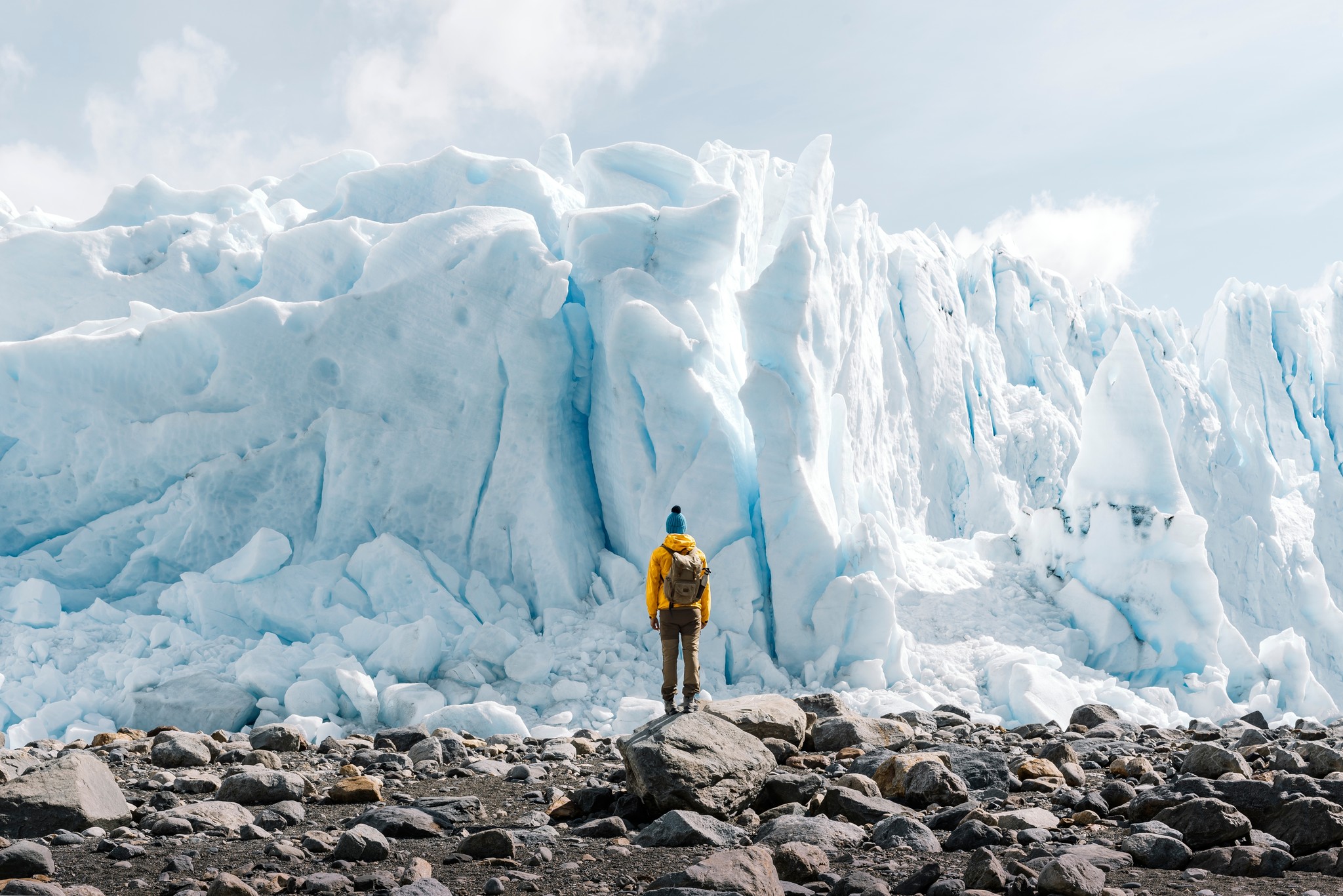August 14, 2025
More and more Polarsteps travelers are taking to the road with their pets, and proving that including them in the adventure is more than doable and totally worth it.
Thinking about traveling with your furry family? We’ve gathered stories and real-world wisdom from seasoned Polarsteps pet parents to help you look after your pack when you’re miles away from home — and make sure everyone enjoys the ride.
Choose your route carefully
Before you start your trip, weigh up not just where you want to go and what you want to see, but what you and your pet can handle. Factor in the temperature and terrain of each destination, as well as your travel buddy’s temperament, stamina, and needs — and be realistic about how you’ll keep your pet safe and entertained while working remotely or visiting cities and indoor spaces.
Once you’re on the road, try to plan activities at cooler times of day or in shaded places to keep your creatures comfortable. Doro and Alberto, who found and adopted their dog Rocky while on the road in their van, traveled with him for a year around Mexico and Central America. He would join them on hikes and cycle rides, with regular stops to cool off, and loved being a passenger on their SUP.

@doroandalberto
Sometimes, the best way to include your pet is to not include them. Helena and Thomasso (aka 4Pawson4Wheels) traveled in a campervan in Europe and the Middle East with Molly the dog and Snowy the cat, taking snow-loving Molly out and about in the mountains, and leaving Snowy curled up by the stove (ironically, she hates snow…).

@4pawson4wheels
Factor in adjustment periods
Culture shock isn’t just for humans. Animals also need time to get used to life on the road and each new destination, so try to be patient as they adapt physically and emotionally.
Bailey, who last year hiked the 28,000km Trans-Canada Trail alone with only her dog Stoney for company, quickly learned to let Stoney set the pace. Stoney wasn’t used to walking on slippery boardwalks in such harsh weather conditions, especially on the leash — back home, she enjoys a free-range lifestyle. “If she’s misbehaving, that’s on me,” Bailey shared while tracking her adventure on Polarsteps. When Bailey bought a bike trailer for Stoney, she made sure that she built up Stoney’s tolerance for it with short rides before cycling for longer stints.

@bailey_whitnack
Routine helps. Helena and Thomasso maintained regular walks and meal times for Molly and Snowy, no matter the day’s adventure.
Research where pets can go
Open-air attractions — even beaches, trails, and national parks — can all be off-limits to animals. The key is to research pet policies in advance and be ready to adjust. You’ll often find alternatives or creative ways to make it work.
Pauline and Arthur (aka Belgian Paws on the Road), traveling in Portugal with their wolfdog Sanka, had a failed sightseeing attempt at Sintra Palace, where pets were prohibited. After that, they took turns exploring solo, or found dog-friendly activities instead.

@belgianpaws_on_theroad
Sometimes, pets are welcome in unexpected places. Helena and Thomasso were allowed to take Molly into Pompeii’s archaeological site — and many other places — in a backpack carrier.

@ryoko_roadtrips
Gwen and Steve (who traveled in a campervan in Europe with Narko the Siberian Husky, and cats Krusty, Heidi, and Seiya), sought out small, local campsites, which they found more relaxed and welcoming to their brood.
Always stay alert for wildlife
Pets can protect you from a lot of dangers, but when it comes to wild animals — especially bears, wolves, and other predators — it’s your job to protect them. Even in relatively tame environments, you’ll encounter local wildlife with your pet, and it’s important to keep both your pet and the resident animals safe.
Arthur and Pauline will never forget the day Sanka was chased by two wild boars on a Portuguese beach. “Our poor dog had the biggest scare of his life,” they said.
Helena and Thomasso’s cat Snowy was once attacked by a stone marten — he escaped, thanks to Molly’s frantic barking.
Take breaks when needed
Dogs and cats also get tired or stressed from too much travel, so make sure you factor in time for you and your pets to recharge. If traffic jams keep everyone cooped up in the van (as happened to Helena and Thomasso in Switzerland), find somewhere close by to camp instead of continuing. If your pet gets sick — as Doro and Alberto experienced with Rocky in Mexico — find a local dog-sitter where your animal can recuperate in comfort.
And don’t try to cram too much into every day. “Going on vacation with your dog teaches you to slow down,” say Silke and Stijn, who traveled in Europe with their golden retriever Onyx. “They like to sniff everything — that’s how they capture the world.”

@onyx.the.explorer
Be prepared for animal admin
Vet visits
From tummy upsets or motion sickness to more serious situations, pet health issues can happen on the road. Pack a pet first-aid kit to deal with minor issues and both printed and digital copies of documents and vaccination records.
Consider what you’ll do if your pet becomes seriously ill. When Rocky developed a rare illness in Central America, Doro and Alberto decided it would be too uncomfortable for him to continue with them, so they flew home with him to resettle him with Alberto’s father (a vet).

@doroandalberto
Pet paperwork
Even if your entire trip is plain sailing, you’ll likely have to schedule routine visits to the vet to obtain pet health certificates or comply with national laws or regional quarantine restrictions. Remember to always check entry requirements such as vaccines, certificates, and passports before entering each new country!
“The most difficult thing is definitely the paperwork,” says Steffanie, the human of Olive the dog, who she found in the Cambodian jungle and has been traveling the world with ever since. “It can be very stressful at times. But getting to share all these experiences with her by my side is worth it. We’ve hiked in the mountains of Peru, run on white-sand beaches in the Caribbean, eaten loads of tapas in Spain, and she’s been there through all of the highs and lows!”
Cleaning and supplies
When traveling with limited space, being well organized is a real plus — even more so if you’ve got animals on board. To avoid spending all of your free time cleaning up after your four-legged dirt sponge, designate a clean-up zone near the entrance to your van or tent, and plan to stay at campsites regularly to wash bedding and other gear.

@doroandalberto
Stockpile pet food whenever you can — Helena and Thomasso have been known to travel with 30kg on board!
Gwen and Steve agree that stocking up on your pet’s favored brands is a good idea: “You may not find the same brands in other countries.”
Enjoy the ride!
Don’t assume pets will limit your adventures — Polarsteps pet parents ski, paddleboard, and even paraglide with their animals — and find that traveling with furry friends is the perfect ice-breaker when connecting with new people. “People socialize much faster when you walk around with your four-legged friend,” say Silke and Stijn.
“Honestly, just go for it!” say Mariëlle and Marc, who travel with their border collie Kyra — and even ski together! — in Europe. “Take your lovely dog on holiday and enjoy the simple things together — there’s so much out there to explore. Seeing how much Kyra loves discovering new places makes us appreciate the little things even more.”

@kyra_bc
Head to our Instagram page to find lots more inspiring explorers making paw-friendly trips around the world — like Polarsteps Pioneer Margaux and her dog Lhassa! Then plan your own animal adventure in the Polarsteps app 🐾 |
|---|
Cover image: Steffanie van Twuyver



